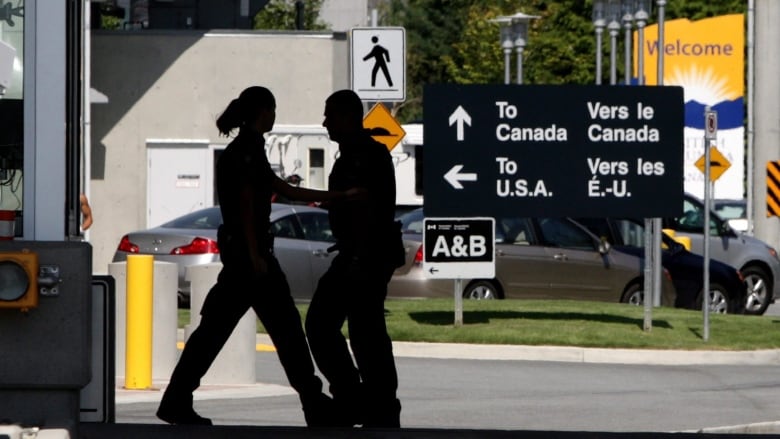
This article is more than
6 year old
An agreement to stem non-essential travel between Canada and the United States is being interpreted and applied very differently by the two countries, despite the Canadian government's assurances that the restrictions would be applied "consistently" on both sides of the border, CBC News has learned.
While Canada has banned all non-essential travel, regardless of the mode of transportation, the United States is only banning non-essential travel across the border at land crossings and by ferry.
"At this time, this Notification does not apply to air, freight rail or sea travel between the United State and Canada but does apply to passenger rail and ferry travel between the United States and Canada," reads an order published on March 24 in the U.S Federal Register, the U.S. government's equivalent of the Canada Gazette.
The U.S. Embassy in Canada has echoed that message in its social media posts and in a fact sheet published on its website.
"The United States has reached a mutual agreement with Canada to restrict non-essential travel across our shared land border," the embassy posted on Facebook over the weekend. "This action does not apply to air, rail or sea travel at this time."
Officials with the U.S Customs and Border Protection office provided a similar answer — that its land ports of entry would only admit those who provide documentation that they are on essential travel, but the directive doesn't apply to things like air or sea travel.

|
That means, for example, that a Canadian who isn't showing symptoms of COVID-19 could be allowed to fly or sail to the United States.
However, an American trying to enter Canada for non-essential travel would be refused, say officials with the Canada Border Services Agency.
"We can't speak for the U.S., unfortunately," wrote CBSA spokeswoman Ashley Lemire. "For those trying to enter Canada, the restrictions for non-essential travel applies to ALL modes of travel."
It's not clear why the two governments have such different interpretations of the month-long agreement — particularly since Public Safety Minister Bill Blair reassured Canadians at the time of the announcement that Canada and the U.S. would coordinate on its implementation.
"Our officials on both sides of the border are working very closely to make sure there is a consistency in the way in which these measures will be implemented," Blair told reporters March 20. "At the same time, we recognize there are exceptional circumstances and there is an expectation that border officers will exercise the appropriate discretion in determining in those exceptional circumstances if the travel is in fact essential.
"What we are all united in attempting to do is to discourage that travel which is clearly not essential, people that are engaged in tourist activities or recreational activities."
Blair's office and that of Deputy Prime Minister Chrystia Freeland have not yet provided CBC News with a written version of the agreement.

|
U.S. President Donald Trump has mused in recent days about extending the deal beyond its scheduled expiry date of April 21.
News that the two countries are implementing the same agreement in very different ways comes as the number of COVID-19 cases in both countries continue to rise — much faster in the U.S. than in Canada.
While Canada has taken aggressive actions to combat the pandemic, at the expense of the economy, the United States was slower to act. More than 206,000 Americans had been diagnosed with COVID-19 by Wednesday, compared with fewer than 10,000 in Canada.
Canadian government officials have sought to reassure Canadians about the prospect of the virus coming into Canada from the U.S., pointing to the agreement that curbs non-essential travel.
"Canada and the United States have agreed to stop non-essential travel specifically for tourism and recreation," Prime Minister Justin Trudeau told reporters on March 20. "Trade and commerce will continue."
Unlike the U.S. order, the order in council adopted by Trudeau's cabinet doesn't spell out what modes of travel it covers.
The original order, dated March 20, included a reference to air travel that was scheduled to arrive before midnight on March 21. However, that order in council was repealed and replaced with a second one on March 26 — two days after the U.S. order — that makes no reference to air travel.
Transport Canada guidance issued to air carriers, citing that order in council, directs them to deny boarding to foreign nationals who are travelling to Canada for "optional or discretionary purposes, including tourism, recreation or entertainment purposes."
Elizabeth Thompson can be reached at elizabeth.thompson@cbc.ca